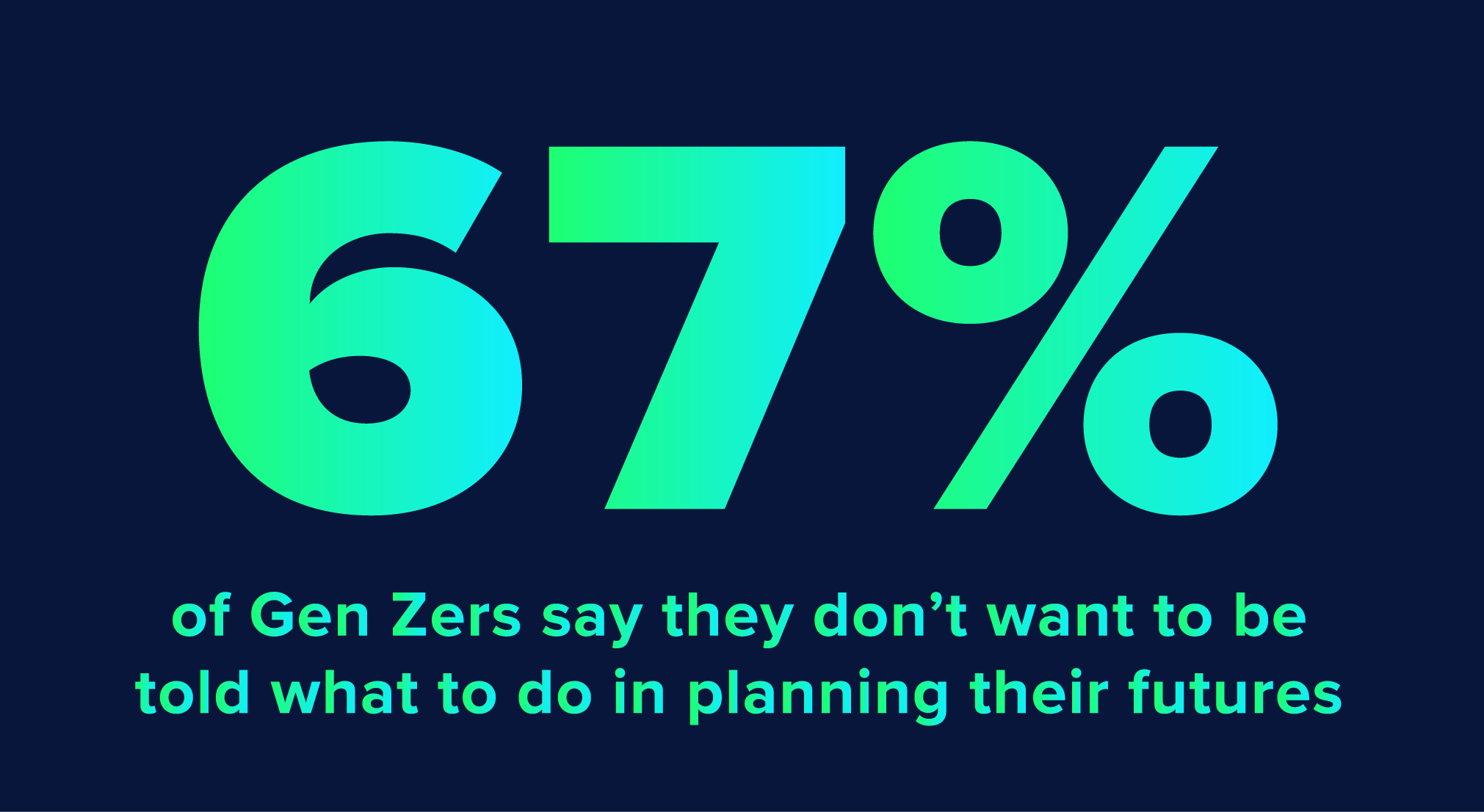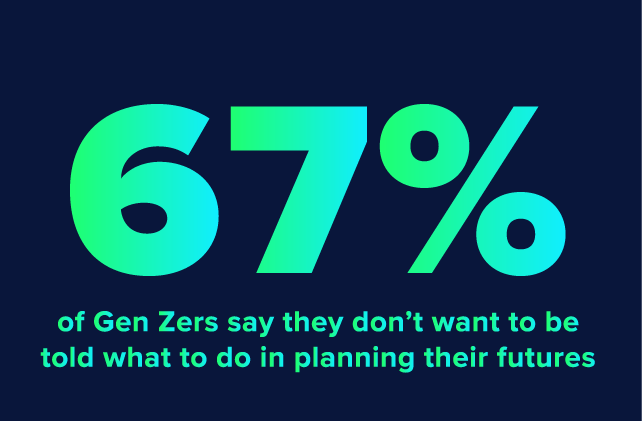Gen Z is a generation like no other — and when it comes to their future planning, they want us to listen.
In fact, 67% of Gen Zers say they don’t want to be told what to do in planning their futures, and only half say they want to attend a traditional four-year college. So how can we best support young people to ensure we’re setting them on paths to success?
It starts by understanding the research behind how this unique generation prefers to learn, and meeting them where they are.
I recently moderated a panel at this year’s ASU+GSV Summit in San Diego centered on how we can grant young people the agency they desire in determining their education-to-career paths. I was joined in this discussion by some of the foremost innovators in the K-12 space: Stephanie Simpson of AMLE, the world’s largest organization dedicated middle grades educators; Shaun McAlmont of NINJIO, LLC, a cybersecurity awareness training solution; Ed Hidalgo of the Cajon Valley Union School District in California, in which career education begins in kindergarten; and Daniel Hack of Allelo, an education analytics platform that facilitates thoughtful student discussions and tracks student progress and engagement using AI.
Here are our key takeaways from the conversation:
We must place students at the center of conversations about their future paths, and introduce them to career-focused learning early on. At the beginning of the panel, I wanted to clarify what we mean by ‘agency.’ At its core, it means empowering students to have ownership and responsibility over their own learning, and giving them voice and choice.
For Shaun of NINJIO, LLC, he saw success by introducing middle and high school students to components of adult learning by connecting them with industry professionals and immersing them in experiential learning: “We begin by introducing students to the modern workplace skill development that they need, to give them more options so that they can make decisions about their path,” he explained.
We can guide young people to make healthy choices without overstepping by helping them to understand their unique skills and passions. Stephanie of AMLE says that a common misconception, especially in the early stages of career learning in middle school, is that it’s always a choice “between A and B” rather than an unconstrained exploratory stage that can open the door to many potential options for a student. Ed of the Cajon Valley Union School District echoed this sentiment, and tied in his district’s “Mission of Me” initiative which helps kids discover their identities: “Every child should be able to tell their unique story,” he said, further elaborating that early exploration helps students “begin to develop a vision of hope for their possible selves.”
We need to give students the language they need to advocate for themselves. Ed said: “The self that a person makes themselves into is a function of language.” If we don’t give young people the language to advocate for what they want, it can stunt the development of their identities, thereby limiting their future prospects. This is one major way in which we can help students to help themselves.
We have to meet students where they are in order to effectively reach and engage them. Daniel of Allelo described his platform’s text-based approach to communication, which mirrors the world in which Gen Z students live on their devices. “Students are texting all day long. They’re on social media. They are in these chats in Discord. So, instead of trying to force students into this forum that they don’t engage with, that they are naturally turned off to, it’s about meeting them where they’re already communicating,” he explained. This helps to bring forth the voices of all students, including those who might not be as outgoing or comfortable speaking up in traditional classroom settings.
To set students up for success, we have to make them aware of various career paths. As Shaun of NINJIO, LLC pointed out, students are often only aware of a few careers. Therefore, it’s critical that we expose students to a wide array of options by actually connecting them with industry as opposed to the usual “career day” approach in which parents in limited professions come in to speak to students in school.
Impactful, student-centered career learning has tangible effects on confidence, self-efficacy, and outcomes for young people. By giving students the tools they need to determine their own identities and paths, they become more confident as they head out into the world. Daniel explained that self-efficacy is one of the key indicators that Allelo looks at: “We use AI in a lot of really exciting ways that provide objective feedback for the educators to then provide to their students,” he said. He went on to explain that this feedback is anchored in tangible performance outcomes such as the complexity of students’ sentences, presentation of new ideas, and willingness to actively participate in discussions.
All of these components contribute to student confidence. When students have confidence, they can take risks, so they’re more likely to take classes that will be challenging — and they’re more likely to voice their concerns or advocate for themselves.
Edtech will continue to be a powerful tool to move career education forward. As Stephanie from AMLE noted, until relatively recently we only had standardized test data to determine future approaches and changes in education. Now, with the advent of various education technologies, “we understand students more holistically,” allowing us to create programs that demonstrably move the needle in helping kids discover who they are.
Daniel agreed, adding that in order to truly have each student be involved, educators need to learn where they’re coming from and how they learn best. “Edtech provides those tools to help with that,” he said.
Thanks for reading! What do you think are the best ways that we can help students help themselves in exploring career paths?For more thought leadership and news on career readiness for young people, you can also peruse and subscribe to our newsletter, PivotED.





